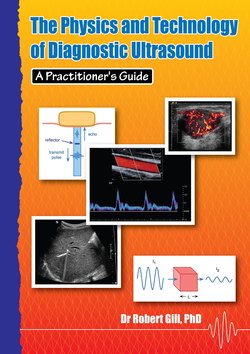Читать книгу The Physics and Technology of Diagnostic Ultrasound: A Practitioner's Guide - Robert Gill - Страница 16
На сайте Литреса книга снята с продажи.
Exercises*
Оглавление1 Rearrange x = 7y to give y as a function of x.
2 Rearrange x - 3 = y + 4 to give y as a function of x.
3 Rearrange 3x + 5 = 2y - 4 to give y as a function of x.
4 Rearrange the following to give y as a function of x and z:
5 Calculate 3 + 2 - 3.
6 Calculate 3 × 2 ÷ 3.
7 Calculate:
8 Calculate the following. Simplify it first by dividing top and bottom by the same amount:
9 Calculate (a + b) given that a = 16 mm and b = 4 cm.
10 Calculate (x2 + y2) for x = 5 m and y = 20 cm.
11 Calculate (x ÷ y) for x = 1540 m/sec and y = 0.2 mm/sec.
12 Calculate 102 × 103.
13 Calculate 10-2 × 103.
14 Calculate 102 ÷ 103.
15 Write 243,000 in scientific notation.
16 Write 0.000435 in scientific notation.
17 Calculate 2820 × 0.0032 using scientific notation.
18 Calculate the following using scientific notation:
19 Use your calculator's log function to calculate log 20. Verify that this is the same as log 2 + log 10.
20 Calculate log (50 ÷ 25). Verify that this is the same as log 50 - log 25.
21 Calculate the sine and cosine of the following angles (using the sin and cos functions of your calculator): 0°, 30°, 45°, 60°, 90°.
22 Calculate the inverse sine and cosine of the following (using the sin-1 and cos-1 functions): 0, 0.5, 0.707, 1.
23 An ultrasound machine has a dynamic range (defined as the ratio of the largest echo to the smallest echo) of 1,380,000. What is the dynamic range expressed in dB?
24 Ultrasound is attenuated by 57 dB in passing through 16 cm of tissue. What is the attenuation expressed as a number?
*Note: The answers to these and other mathematical exercises can be found in the back of the book.
For video demonstrations of how to solve these and other mathematical exercises in this book please see: http://sonophys.com.au/whiteboards.html
